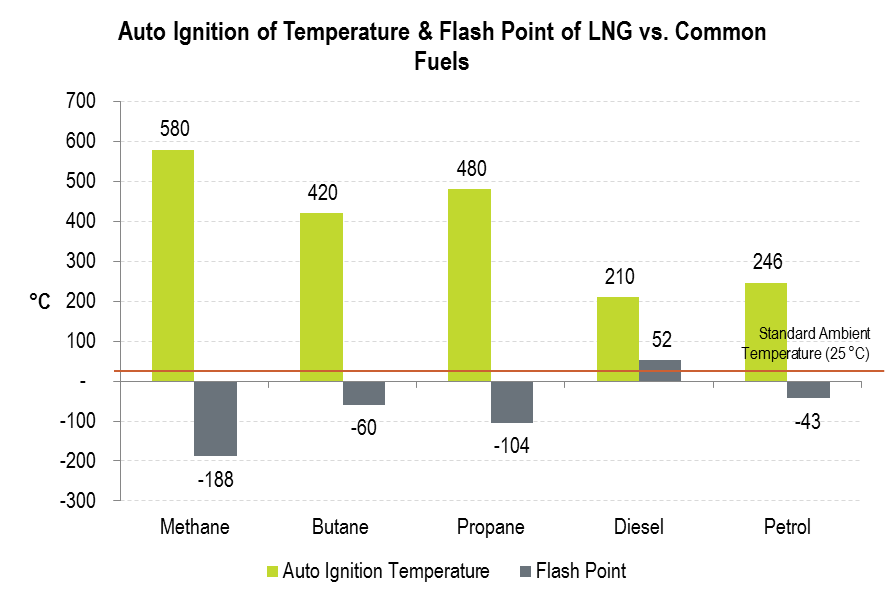Safety
Essential safety guidelines
Cryogenic Liquid Hazard
LNG is a cryogenic liquid. Physical contact or spillage constitutes a personnel and equipment hazard. Appropriate Personal Protective Equipment must be worn at all times while handling LNG.
Contact with liquid or cold vapour may cause frostbite, freeze burns and permanent eye damage. LNG must only be stored and handled using appropriate equipment.
Phase Transition Hazard
As LNG warms it transitions from a liquid to a gaseous state. This phase transition results in the Liquefied Natural Gas expanding roughly 600 times in volume. If LNG is trapped in a sealed space, it poses a risk of rapid pressure release.
Asphyxiation Hazard
Natural Gas can cause asphyxiation by displacing oxygen in confined areas.
Flammability Hazard
Natural Gas is flammable. Its auto ignition point is between 482-632ºC, which is higher than butane, propane, diesel and petrol. It has a lower explosive limit of 5% and upper explosive limit of 15%.


